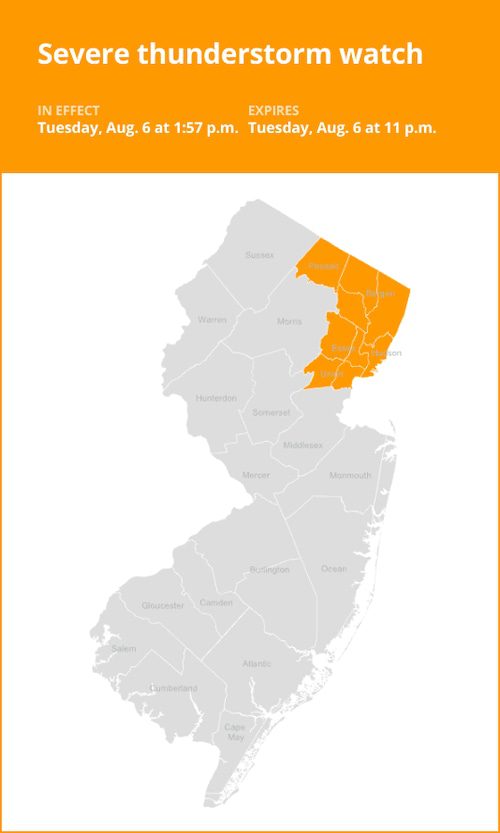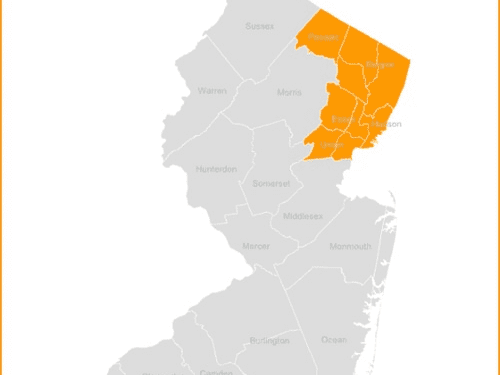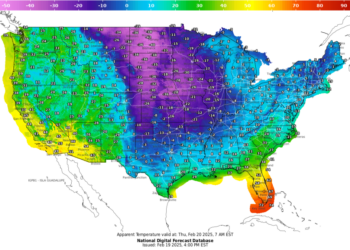On Tuesday at 1:57 p.m. the National Weather Service issued a severe thunderstorm watch in effect until 11 p.m. for Bergen, Essex, Hudson, Passaic and Union counties.
 Staying safe as lightning approaches: Expert advice
Staying safe as lightning approaches: Expert advice
Each year, lightning strikes the United States approximately 25 million times, with the majority of these electrifying events occurring during the summer months. Unfortunately, lightning is responsible for claiming the lives of approximately 20 people annually, as reported by the weather service. The threat of lightning becomes more pronounced as thunderstorms draw nearer, peaking when the storm is directly overhead and gradually waning as it moves away.
To ensure your safety during a thunderstorm, keep these recommendations in mind:
Lightning safety plan:
When venturing outdoors, it’s vital to establish a clear plan for seeking shelter in case of lightning.Stay vigilant by monitoring the sky for ominous signs and listening for the telltale sound of thunder. If thunder is audible, it’s a clear indication of nearby lightning.Seek a safe place to shelter, preferably indoors.
Indoors safety measures:
Once you’re indoors, avoid using corded phones, electrical devices, plumbing fixtures, and stay away from windows and doors.These precautions help reduce the risk of electrical surges, as lightning can follow conductive pathways.
Wait for the all-clear:
After the last lightning strike or thunderclap, wait at least 30 minutes before resuming outdoor activities.It’s important to remember that lightning can strike even when a storm seems to have passed, so exercise caution.
When indoor shelter isn’t available:
If you find yourself outdoors without access to indoor shelter during a thunderstorm, take these steps to maximize your safety:
Avoid open fields, hilltops, or ridge crests, as they expose you to greater lightning risk.Steer clear of tall, isolated trees and other prominent objects. In wooded areas, stay close to lower stands of trees.If you’re with a group, ensure individuals are spread out to prevent lightning current from transferring between people.Camping in an open setting during a thunderstorm is strongly discouraged. If no alternative exists, set up camp in a valley, ravine, or other low-lying areas. Remember that a tent offers no protection against lightning.Do not approach water bodies, wet objects, or metal items. While water and metal don’t attract lightning, they conduct electricity effectively and can pose significant risks.
In summary, when facing the threat of lightning, preparedness and vigilance are your best allies. By following these guidelines, you can significantly reduce the likelihood of lightning-related incidents and prioritize your safety.
Mastering wet roads: Safety tips for heavy rainfall
Rain can turn roads into hazards. Stay informed and follow these tips from the weather service to ensure safety during heavy rainfall:
Beware of rapid water flow:
In heavy rain, refrain from parking or walking near culverts or drainage ditches, where swift-moving water can pose a grave danger.
Maintain safe driving distances:
Use the two-second rule to maintain a safe distance from the car in front of you and allow an extra two seconds in heavy rain.
Reduce speed and drive cautiously:
On wet roads, slowing down is paramount. Gradually ease off the accelerator and avoid abrupt braking to prevent skidding.
Choose your lane wisely:
Stay toward the middle lanes – water tends to pool in the outside lanes.
Visibility matters:
Enhance your visibility in heavy rain by activating your headlights. Be particularly vigilant for vehicles in blind spots, as rain-smeared windows can obscure them.
Watch out for slippery roads:
The first half-hour of rain is when roads are slickest due to a mix of rain, grime, and oil. Exercise heightened caution during this period.
Keep a safe distance from large vehicles:
Large trucks and buses can reduce your visibility with tire spray. Avoid tailgating and pass them swiftly and safely.
Mind your windshield wipers:
Overloaded wiper blades can hinder visibility. If rain severely impairs your vision, pull over and wait for conditions to improve. Seek refuge at rest areas or sheltered spots.
When stopping by the roadside is your only option, position your vehicle as far off the road as possible, ideally beyond guardrails. Keep your headlights on and activate emergency flashers to alert other drivers of your position.
By following these safety measures, you can significantly reduce risks and ensure your well-being when heavy rain pours down. Stay informed about weather conditions and heed advice from local authorities to make your journey safe and sound.
Advance Local Weather Alerts is a service provided by United Robots, which uses machine learning to compile the latest data from the National Weather Service.
Source link : http://www.bing.com/news/apiclick.aspx?ref=FexRss&aid=&tid=66b26e8486fa4a1aa6abe29368fe4f67&url=https%3A%2F%2Fwww.nj.com%2Fweather-alerts%2F2024%2F08%2Fsevere-thunderstorm-watch-affecting-5-n-j-counties-until-tuesday-night.html&c=12459201511334970547&mkt=en-us
Author :
Publish date : 2024-08-06 07:01:00
Copyright for syndicated content belongs to the linked Source.






